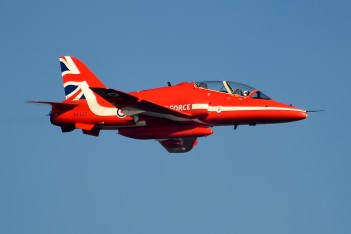London. Britain’s capital. The inspiration and backdrop for countless books, songs, poems, films and TV shows. A global epicentre of culture, trade and commerce, with landmarks recognised the world over, and home to a cosmopolitan and diverse range of communities.
At FlyDays, it continues to remain a popular destination on our wide range of Helicopter Tours packages, starting from a variety of locations in neighbouring counties like Essex, Kent and Surrey. Climb aboard with us and let us guide you around just some of the fantastic sights the City has to offer…
The unmistakable chimes of Big Ben, the huge, neo-Gothic clock that stands proud above the River Thames and by the Houses of Parliament, is not only as distinctive a soundtrack of the city as the fluttering wings of pigeons in Trafalgar Square or the honk of a Routemaster bus horn in traffic at Holborn, but it is also one of London’s oldest sights.
At 161 years old, it has seen more generations, more changes and more movement than a lot of other destinations in the Capital. Known more formally as ‘The Great Bell’, striking on the hour, and at 15, 30 and 45 minutes past the hour, it’s believed that it’s best known name is a nod to either Sir Benjamin Hall, who oversaw its construction, or the 19th century heavyweight boxer Benjamin Caunt.
Part of a Grade I listed building since 1970, and a UNESCO World Heritage site since 1987, Big Ben is currently nearing completion on essential maintenance and restoration works that, at time of writing, began three years ago in 2017, which will be finished in 2021. However, the chimes currently still ring out on important dates like New Year’s Eve and Remembrance Sunday.
Compared to other landmarks along the Thames, the O2 Arena, nestled on the Peninsula of the river where Canary Wharf connects to Greenwich by the Blackwall Tunnel, is relatively new. It was first built in the late 90s as part of a major regeneration project, and opened as the Millennium Dome in 2000. It was only open for one year in this guise.
When the nearby Docklands Arena was closed and demolished in 2006, The O2 was opened in its place a year later. Much like the Manchester Arena up north, it has capacity for up to 20,000 people, and has the multifunctional ability to be changed into a concert venue, exhibition space, conference venue, ice rink or basketball court. In fact it was used for the latter when London hosted the Olympic and Paralympic Games in 2012.
Over the last 13 years, The O2 has welcomed some of the biggest names from the world of music, comedy and entertainment to the capital. Rock legends Bon Jovi played the first ever big concert show at the arena on 24th June 2007. Since that time, everyone from Beyoncé to Prince, from the Spice Girls to Take That have taken to its stage. On its 10th anniversary since opening in 2017, it topped the list of the World’s Busiest Arenas, after selling 1,443,232 tickets that year alone.
After the Great Fire of London ravaged a lot of the old Medieval city in 1666, including the Old Gothic style cathedral, one of the first projects that was incorporated into the rebuilding programme that followed was St Paul’s Cathedral, an awesome, sprawling English Baroque building designed by Sir Christopher Wren.
The second largest church building in area in the UK (just behind Liverpool Cathedral), the magnificent dome that stands tall along the skyline, is just as impressive on the inside as it is on the outside, with the famous Whispering Gallery, painted by Sir James Thornhill, with a distinctive Oculus inspired by the Pantheon in Rome that is unquestionably as much a work of art as a place of worship.
Despite being notably struck by bombs during the Blitz raids of World War II in 1940 and 1941, St Paul’s still stands to this day, a reminder of its tenacity and spirit, and also the site of events such as the Royal Wedding of Prince Charles and Diana, and the 80th and 90th birthday celebrations of Queen Elizabeth II, that means it remains a popular destination for tourists to the city.
London’s South Bank is undoubtedly the beating heart of the city’s cultural epicentre, with many notable theatres and art galleries such as the Royal Festival Hall and BFI Southbank not too far away, and the London Eye within close proximity. Crossing the other side of the river, to the business and financial hub around Bank and Liverpool Street, is Waterloo Bridge.
The first incarnation of the bridge was constructed from 1807 - 10 by John Rennie, and opened in 1817, when it was known as the Strand Bridge, owing to its close proximity to London’s major thoroughfare of the same name. However, despite being an inspiration for Thomas Hood’s 1844 poem ‘The Bridge of Sighs’, and the subject of a painting by French impressionist Claude Monet, it was beset by structural problems from 1884 onwards.
This led to the complete closure and demolition of this version of the bridge in 1920, with the second incarnation - that still stands today - built by Sir Giles Gilbert Scott, fully opened in 1945. It became one of London’s most iconic landmarks during the swinging 60s, featured in the film Alfie starring Sir Michael Caine, and also being the subject of The Kinks’ 1967 hit ‘Waterloo Sunset’.
The West End of London is as recognised amongst theatre goers the world over as Broadway in New York, but there’s one theatre that was around many centuries before the Palladium or the Coliseum came to being. We are of course talking about the majestic Elizabethan Globe Theatre.
Situated on the stretch of the Thames that has the Millennium Bridge and Southwark Bridge either side of it, it was the home of William Shakespeare’s playing company, the Lord Chamberlain’s Men, and thus the site of performances of some of the greatest plays in all of English literature.
The Globe that stands today is actually a recreation, first opened in 1997, as the original building was accidentally destroyed in a fire in 1613 during a performance of Henry VIII, with a second incarnation, opened in 1614, closed by the Puritans in 1642. However, the modern reconstruction still captures the feeling and vibrancy that Shakespeare’s original audiences saw all those centuries ago.
To explore and book from our full range of Helicopter Tours in the City of London and other destinations across the UK through dates and gift vouchers, head to our dedicated Helicopter Rides page on FlyDays today!



